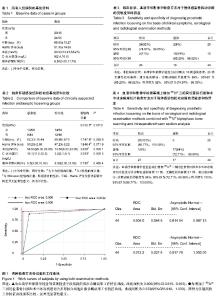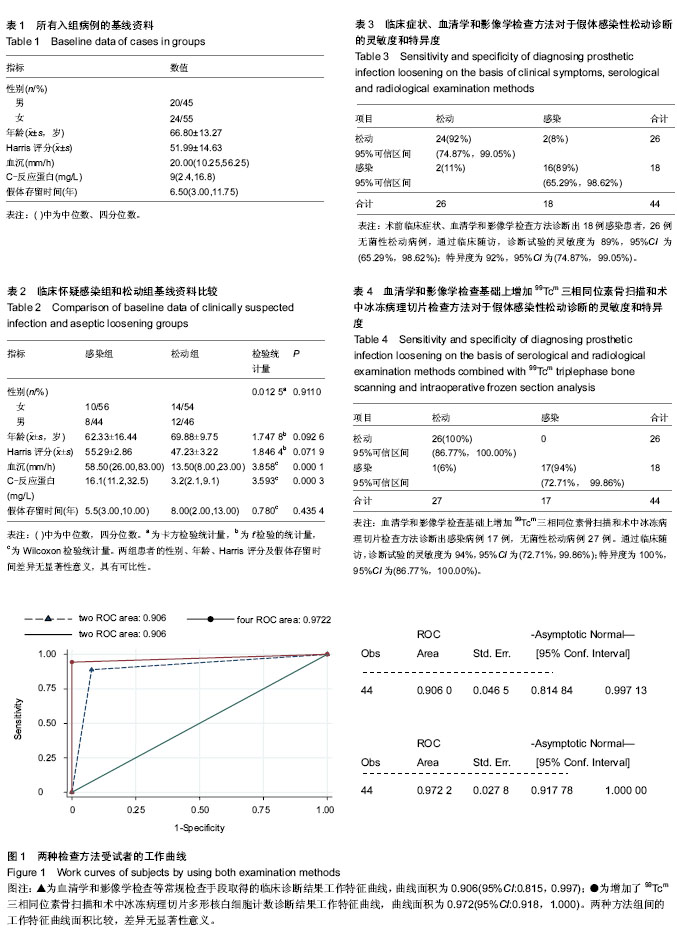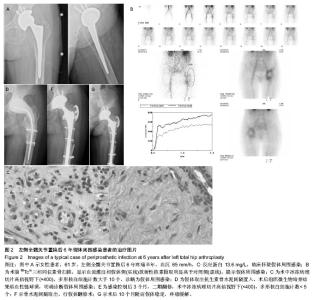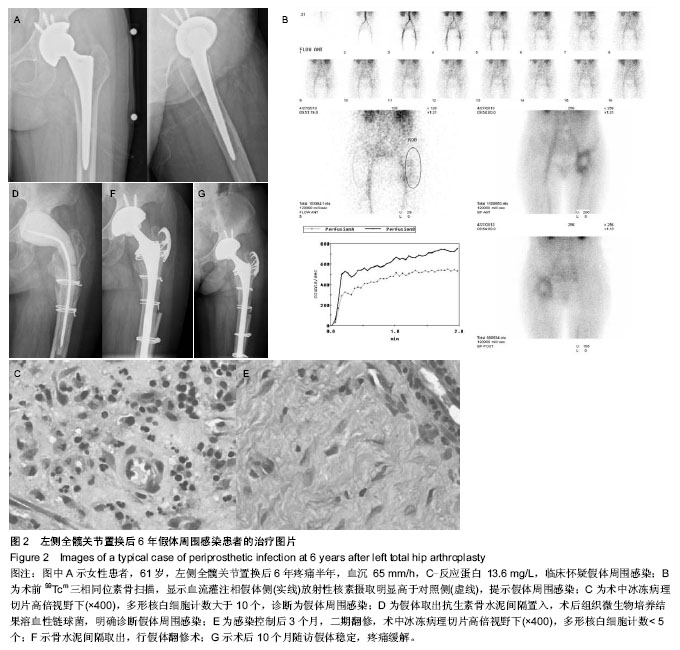| [1] Volin SJ, Hinrichs SH, Garvin KL. Two-stage reimplantation of total joint infections: a comparison of resistant and non-resistant organisms. Clin Orthop Relat Res. 2004;(427): 94-100.
[2] Charnley J. A clean-air operating enclosure. Br J Surg. 1964; 51: 202.
[3] Ong KL, Kurtz SM, Lau E, et al. Prosthetic joint infection risk after total hip arthroplasty in the Medicare population. J Arthroplasty. 2009;24:105.
[4] Uckay I, Lubbeke A, Emonet S, et al. Low incidence of haematogenous seeding to total hip and knee prostheses in patients with remote infections. J Infect. 2009;59:337-345.
[5] Dale H, Skråmm I, Løwer HL, et al. Infection after primary hip arthroplasty:a comparison of 3 Norwegian health registers. Acta Orthop. 2011;82, 646-654.
[6] Kurtz S, Ong K, Lau E, et al. Projections of primary andrevision hip and knee arthroplasty in the United States from 2005 to 2030. J Bone Joint Surg Am. 2007;89, 780-785.
[7] Iorio R, Robb WJ, Healy WL, et al. Orthopaedic sur-geon workforce and volume assessment for total hip and knee replacementin the United States: preparing for an epidemic. J Bone Joint Surg Am. 2008;90,1598-1605.
[8] Keogh CF, Munk PL, Gee R, et al. Imaging of the painful hip arthroplasty. Am J Roentgenol. 2003;180:115-120.
[9] Mahomed NN, Barrett JA, Katz JN, et al. Rates and outcomes of primary and revision total hip replacement in the United States Medicare population. J Bone Joint Surg [Am]. 2003; 85-A:27-32.
[10] Berbari E, Mabry T, Tsaras G, et al. Inflammatory blood laboratory levels as markers of prosthetic joint infection: a systematic review and meta-analysis. J Bone Joint Surg Am. 2010;92:2102.
[11] Roder C, Eggli S, Aebi M, et al.The validity of clinical examination in the diagnosis of loosening of components in total hip arthroplasty. J Bone Joint Surg [Br]. 2003;85-B: 37-44.
[12] Peters AM. Localising the cause of undiagnosed fever. Eur J Nucl Med. 1996; 23:239-242.
[13] Itasaka T, Kawai A, Sato T, et al. Diagnosis of infection after total hip arthroplasty. J Orthop Sci. 2001;6:320-326.
[14] Bauer TW, Parvizi J, Kobayashi N, et al. Diagnosis of periprosthetic infection. J Bone Joint Surg Am. 2006;88(4): 869-882.
[15] Feldman DS, Lonner JH, Desai P, et al. The role of intraoperative frozen sections in revision total joint arthroplasty. J Bone Joint Surg Am. 1995; 77:1807-1813.
[16] Trampuz A, Piper KE, Jacobson MJ, et al. Sonication of removed hip and knee prostheses for diagnosis of infection. N Engl J Med. 2007;357(7):654-663.
[17] Hoenders CSM, Harmsen MC, Van Luyn MJA. The local inflammatory environment and microorganisms in ‘aseptic’ loosening of hip prostheses, review. J Biomed Mater Res Part B Appl Biomater. 2007;86B:291-301.
[18] Smeltzer MS, Nelson CL, Evans RP. Biofilms and aseptic loosening. The role of biofilms in devicerelated infections. In: Shirtliff M, Leid JG, editors. Springer Series on Biofilms, Vol. 3. Berlin, Heidelberg: Springer, 2008: 57-74.
[19] Atkins BL, Athanasou N, Deeks JJ, et al. Prospective evaluation of criteria for microbiological diagnosis of prosthetic-joint infection at revision arthroplasty. The OSIRIS Collaborative Study Group. J Clin Microbiol. 1998;36:2932.
[20] Spangehl MJ, Masri BA, O'Connell JX, et al. Prospective analysis of preoperative and intraoperative investigations for the diagnosis of infection at the sites of two hundred and two revision total hip arthroplasties. J Bone Joint Surg Am. 1999; 81:672.
[21] Choi HR, von Knoch F, Zurakowski D, et al. Can implant retention be recommended for treatment of infected TKA? Clin Orthop Relat Res. 2011;469:961.
[22] Berbari EF, Marculescu C, Sia I, et al. Culture-negative prosthetic joint infection. Clin Infect Dis. 2007;45:1113.
[23] Marculescu CE, Berbari EF, Hanssen AD, et al. Outcome of prosthetic joint infections treated with debridement and retention of components. Clin Infect Dis. 2006;42:471.
[24] Masri BA, Panagiotopoulos KP, Greidanus NV, et al. Cementless two-stage exchange arthroplasty for infection after total hip arthroplasty. J Arthroplasty. 2007;22:72.
[25] Ure KJ, Amstutz HC, Nasser S, et al. Direct-exchange arthroplasty for the treatment of infection after total hip replacement. An average ten-year follow-up. J Bone Joint Surg Am. 1998;80:961.
[26] Meermans G, Haddad FS. Is there a role for tissue biopsy in the diagnosis of periprosthetic infection? Clin Orthop Relat Res. 2010;468:1410.
[27] Parvizi J, Zmistowski B, Berbar EF, et al. New definition for periprosthetic joint infection: from the workgroup of the Musculoskeletal Infection Society. Clin Orthop Relat Res. 2011; 469:2992.
[28] Schauwecker DS. The scintigraphic diagnosis of osteomyelitis. AJR Am J Roentgenol. 1992;158:9-18.
[29] Nagoya S, Kaya M, Sasaki M, et al. Diagnosis of peri-prosthetic infection at the hip using triple-phase bone scintigraphy. J Bone Joint Surg Br. 2008;90-B: 140-144.
[30] Reinartz P, Mumme T, Hermanns B, et al. Radionuclide imaging of the painful hip arthroplasty: positron-emission tomography versus triple-phase bone scanning. J Bone Joint Surg [Br]. 2005;87-B:465-470.
[31] Trampuz A, Steckelberg J, Osmon D, et al. Advances in the laboratory diagnosis of prosthetic joint infection. Rev Med Microbiol. 2003; 14: 1-14.
[32] Lonner JH, Desai P, Di Cesare PE, et al. The reliability of analysis on intraoperative frozen sections for identifying active infection during revision hip or knee arthroplasty. J Bone Joint Surg [Am]. 1996;78:1553-1558.
[33] Spangehl MJ, Masri BA, O’Connell JX, et al. Prospectiv analysis of preoperative and intraoperative investigations for the diagnosis of infection at the sites of two hundred and two revision total hip arthroplasties. J Bone Joint Surg [Am]. 1999;81:672-683.
[34] Tsukayama DT, Goldberg VM, Kyle R. Diagnosis and management of infection after total knee arthroplasty. J Bone Joint Surg Am. 2003;85-A Suppl 1:S75-80. |



